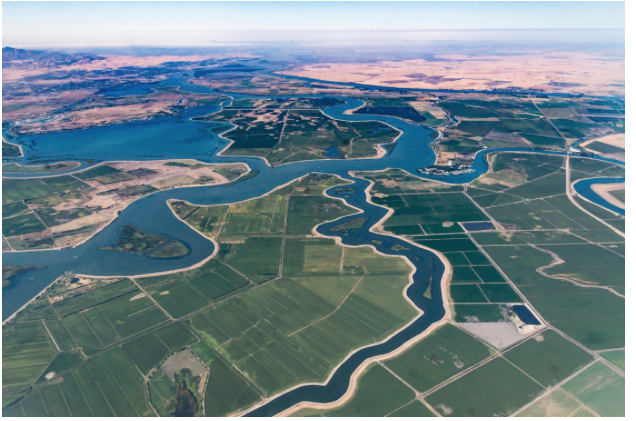CommentsTHE ENVIRONMENT - The most important battleground in California’s perpetual war over water is the Sacramento-San Joaquin Delta.
Dozens of Northern California rivers and streams coalesce in the Sacramento and San Joaquin rivers, which join to form the Delta estuary and whose waters then flow into San Francisco Bay.
The state’s massive water infrastructure was constructed on an assumption that water left to flow to the sea was wasted. The web of reservoirs and canals diverts river and Delta water to farms in the Sacramento and San Joaquin Valleys and domestic users as far south as San Diego.
However, in recent decades environmental groups and their allies, such as Indian tribes and fishermen, have demanded reductions in diversions, arguing that they severely damage habitat for fish, such as spawning salmon, and other wildlife.
The conflict has been played out in multiple arenas – the Legislature, Congress, federal and state regulatory agencies and the courts. It’s been trench warfare with long periods of stalemate, occasional gains by one side or the other and periodic attempts at armistice.
A few years ago, the state Water Resources Control Board was poised to impose some limits on diversions that the agricultural industry saw as draconian – particularly since the state was also beginning to regulate farmers’ ability to pump groundwater to fill gaps in surface water supplies.
Govs. Jerry Brown and Gavin Newsom wanted to head off a full-fledged legal showdown by urging “voluntary agreements” on river flows acceptable to both farm water agencies and the water board and negotiations have been underway for several years.
One such agreement affecting the Sacramento River and its tributaries appears headed for adoption, but this month, the draft of a second affecting the San Joaquin River hit a huge roadblock. In a letter to the river’s major diverters, the Newsom administration rejected their proposal and said it would urge the water board to resume direct regulation of San Joaquin flows.
Environmental Protection Secretary Jared Blumenfeld and Natural Resources Secretary Wade Crowfoot told the San Joaquin districts that “at this point it is clear that despite considerable efforts, proposed voluntary actions by water agencies on the San Joaquin River tributaries have fallen short of needed flow and habitat improvements, and viable proposals are not being offered at this time.”
The two administration officials added, “We will ask the State Water Board to resume all activities necessary to implement the flow objectives established by the 2018 Bay-Delta Plan for the Lower San Joaquin River and its three major tributaries, the Stanislaus, Tuolumne, and Merced rivers.”
Although Blumenfeld and Crowfoot said the San Joaquin agencies could re-enter the process “if they propose necessary levels of additional water flows and habitat,” their rejection letter sets the stage for political and legal warfare. San Joaquin Valley farmers see the water board’s pending actions as severely damaging their ability to continue operations.
Dave Eggerton, executive director of the Association of California Water Agencies called the administration letter “very concerning” because of the potential for all-out legal war.
However, as news of the letter spread in the water community, environmental groups celebrated. They had long viewed the “voluntary agreement” process as a tool to subvert stricter regulation necessary to protect habitat.
They scored another win last week when Fresno Superior Court Judge D. Tyler Tharpe refused to validate a very controversial water supply contract that the huge Westlands Water District obtained from the Trump administration. In his ruling, Tharpe cited procedural irregularities, including violation of state open meeting laws.
Thus, as drought grips California, the battles over the state’s very limited supply of water seem destined to intensify.
(Dan Walters has been a journalist for nearly 60 years, spending all but a few of those years working for California newspapers. He began his professional career in 1960, at age 16, at the Humboldt Times and is now distributed by CalMatters.org.)














